By Constantinos Massonos, Contributor
The right to publicity, which is a right protected by law, gives any individual the exclusive right to license the use of any distinct aspect of their identity for commercial promotion.
Through the use of this right, athletes who were traditionally paid just to compete in their respective sport, could create an extra revenue stream through licensing the use of their Name, Image and Likeness (NIL) for commercial purposes. Nowadays the development and commercial exploitation of an athlete’s brand has become an integral part of their career, allowing them to monetize their on-field success in the long term, even after their playing days are over.
The NCAA (National Collegiate Athletic Association) is a US based association which was initially developed, early in the 20th century, to protect the welfare of college athletes and the viability of college sports. A hundred years later, the association developed in such a scale to have almost half a million student-athletes from 1100 different schools competing in its leagues.
Until recently, college athletes competing in the NCAA not only competed in their sports without receiving any financial compensation, other than scholarships, but were also prohibited to financially benefit from licensing the commercial use of their image rights. In June 2021, after years of different legal battles, the US Supreme Court unanimously ruled (9-0) in favor of Division I college athletes that the limits on education-related benefits, set by the NCAA, could not be legally enforced, allowing thus NCAA college athletes to benefit from their name, image and likeness.
The right to commercialize their NIL creates a vast number of opportunities for college athletes to start building and capitalizing on their brand. A number of sports related organizations have even launched NIL programs aimed towards college athletes. The WWE has developed a program called “Next In Line”, in order to help athletes develop their brand by training them in brand building, media training, communications, live event promotion, creative writing and community relations.
The commercialization of college athletes’ NIL starts with the identification of the athletes’ target market, which mainly consists of their social media fanbase. Therefore, developing a solid social media fanbase is the first step towards the commercialization of an athlete’s NIL. At their current life phase, college athletes appeal more to younger people and are seen as free, young and fearless with a drive to succeed in making their dream come true. A well-crafted brand building strategy, based on the above life phase and adjustable to the evolving life phases of the athlete can transform them into a local, national or even global brand which can be leveraged to sell, be endorsed and create more revenue streams.
The strategic building of the athlete’s brand must also be based on the personal values the athlete can bring into the marketplace in order to differentiate them from the rest of the athletes. Some athletes might simply be popular because of their athletic performance but other components can also influence the audience such as an appealing appearance, the athletes’ values and beliefs, or a marketable lifestyle. A thorough analysis of the athlete’s personal brand as well as an analysis of the athlete’s fanbase can be quite revealing and can give the athlete a direction as to where to look for sponsors. Such an analysis can reveal suitable industries or products, or even specific companies that align with the athlete’s characteristics, resulting to a successful match for the athlete in terms of endorsements or sponsorships.
We set below, a few simple steps you need to take as a college athlete in order to successfully commercialize your athletic brand.
- Think about your competitive advantages. What makes you stand out from other professional athletes? Athletes can no longer rely solely on their talent to provide the all-important competitive edge; an athletic brand that stands out among the rest involves more of the athlete’s personality: their passions, interests and life outside of sports. Indeed, studies suggest that sports fans put more emphasis on character-focused stories about individual athletes, relating to their personal life and attributes, rather than on performance-focused stories. Authenticity is vital when it comes to building a strong brand; when the brand that you have built is a true reflection of who you are, your unique traits will define your brand and this is what will set you apart.
- Determine your audience. Do you know who your audience is and how to communicate with them? This is important so that your brand portrays the most marketable version of yourself. You have to know what your target audience likes, believes in and holds in high esteem, where to find them and how to get them to buy-in to what is being sold. Equally, you have to think about businesses reaching out to professional athletes to promote their products or services and how they go about deciding who to recruit for this purpose: a strong athletic brand can convince the business that it is “that” particular athlete that they need to hire.
- Consider the public’s perception of you as a person and as an athlete; this is your brand’s core. The fans’ decision to invest in an athletic brand, whether it is to purchase memorabilia of a specific athlete, watch a game on TV or buy tickets to the game, rests on this perception. In turn, this perception is based on an athlete’s sport performance, as well as character in real life. Take Roger Federer, for example, who has time and again said: “It is nice to be important, but it’s more important to be nice”, a phrase which perfectly sums up his public image. This ethos is key to his reputation as one of the most admired athletes in the world. The 20-time grand slam champion has received, for 2017-2018, a net income of $77.2 million with $65 million being from endorsements and appearance fees. Notably, his off-court earnings from marketers are higher than any other athlete’s.
- Use social media strategies to promote your athletic brand. Through social media, athletes are able to build their personal brand, become known and develop brand equity. Social media is not only a way to promote one’s self, but also a means to promote a sponsor’s products and services. Therefore, by having a strong social media presence, athletes create lucrative financial opportunities through sponsorships and endorsements.
- Choose the right social media outlets. Depending on the target audience you want to reach, you have to choose the most suitable social media outlets through which you will do that. For example, if your target audience consists of teenagers, then Instagram is a more appropriate social media platform than Twitter or LinkedIn.
- Decide on the content of your social media posts. You want to develop a certain public image and you want to express your beliefs and opinions through social media. You need to choose carefully the type of content that you will be sharing with your fans in order to achieve that. You also have to make sure to post original content; your own text, pictures and videos are more likely to gain attention than sharing someone else’s content.
- Look into industries that invest in sports advertising. When creating their personal marketing strategy, athletes should be aware of the prevailing sports advertising trends as well as the top industries that invest in the sponsorship of athletes. Knowing where the money is, can be quite beneficial for athletes so that they gear their efforts towards that direction. There are a number of industries that invest big in brand ambassadors from the sports sector and these include the beverage industry, the auto industry, sportswear brands, watchmakers, etc.
It is obvious from the above, that any college athlete can strategically utilize their unique qualities and characteristics in order to build a signature brand that can be monetized in various ways, including product endorsements, attracting sponsorships, merchandising or by just appearing at events. Carefully building a long-term plan, can help college athletes maximize the benefits from the commercial use of their sports brand.
The Money Smart Athlete® Blog is established and run by the Sports Financial Literacy Academy® (SFLA). Through its education programs, the SFLA has the vision to financially educate and empower athletes of all ages to become better people, not just better athletes. For more information on our courses, our SFLA Approved Trainer Program®, and how they can benefit you and your clients, please get in touch with us at [email protected]

